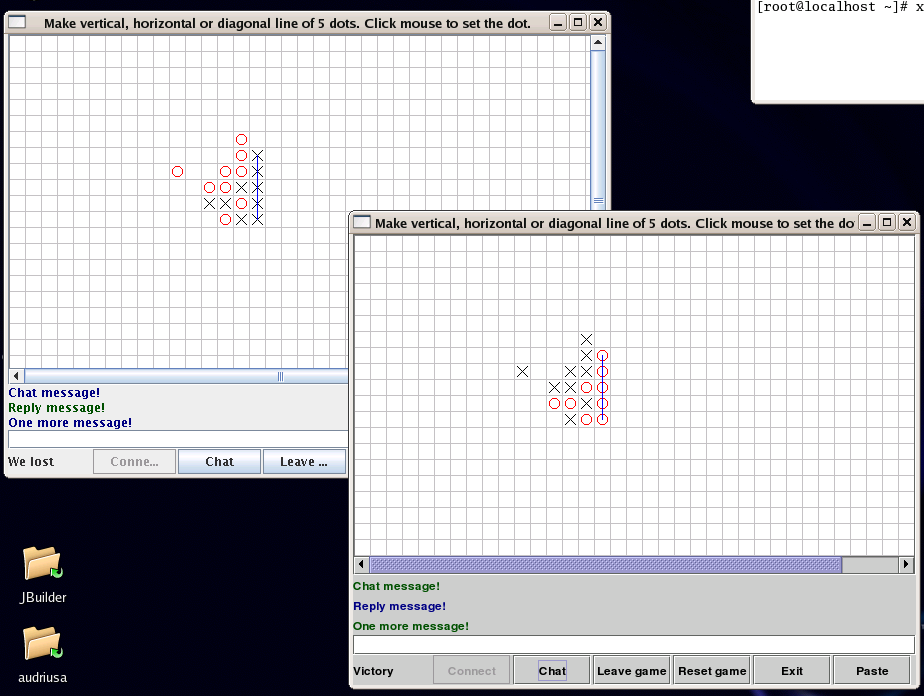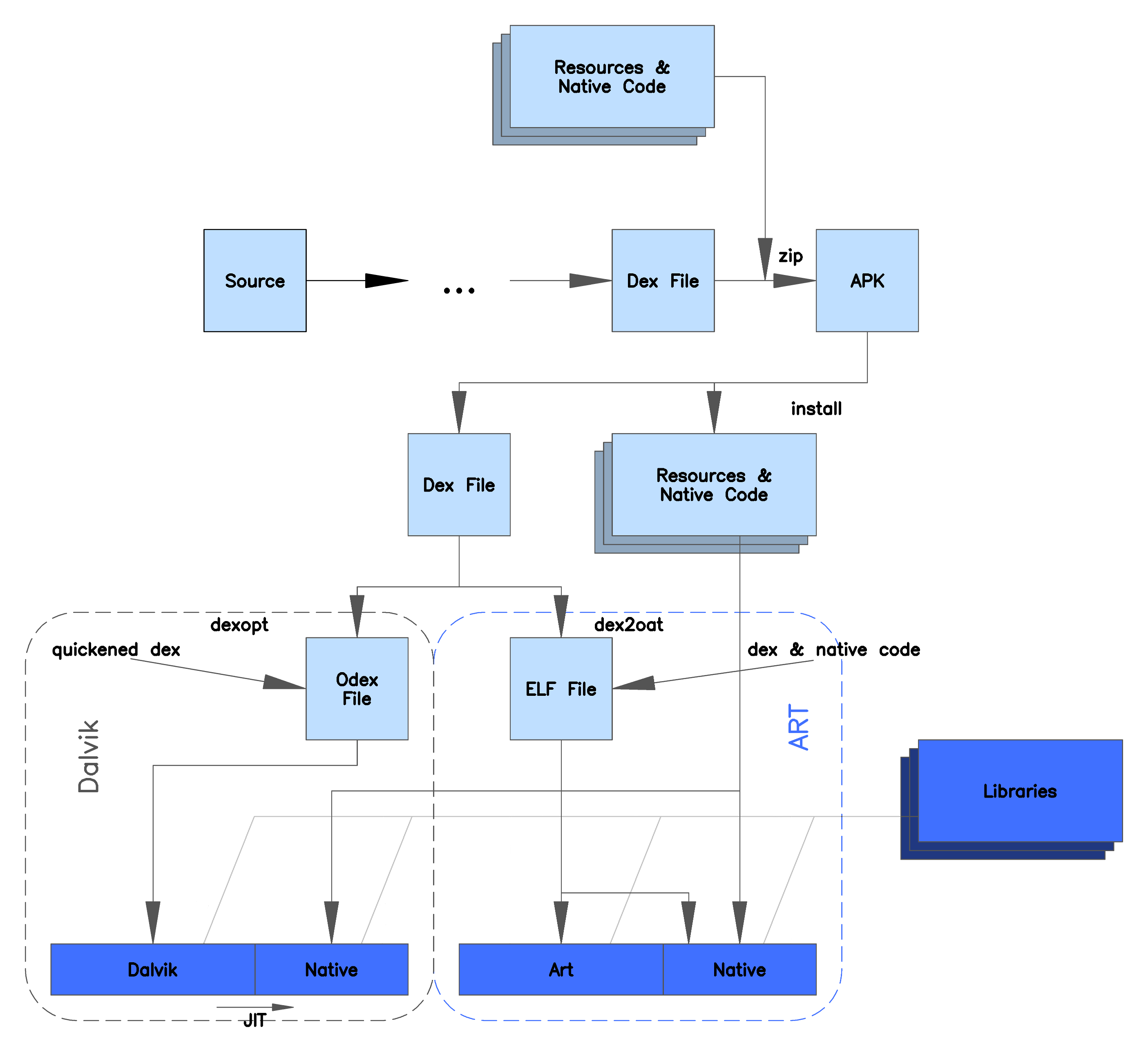|
JamVM
JamVM is an open-source Java Virtual Machine (JVM) developed to be extremely small compared with other virtual machines (VMs) while conforming to the Java virtual machine specification version 2 (blue book). JamVM can be configured to use the GNU Classpath or the OpenJDK Java class library and recent versions support object finalization, Soft/Weak/Phantom References, the Java Native Interface (JNI) and the Reflection API. The compacting garbage collector can run either synchronously or asynchronously within its own thread. JamVM currently supports the CPUs: AMD64, ARM, x86, MIPS, PowerPC and SPARC. The OpenJDK compatible version of JamVM is supported by IcedTea, and IcedTea packages of JamVM are included in both Debian and Ubuntu Ubuntu ( ) is a Linux distribution based on Debian and composed mostly of free and open-source software. Ubuntu is officially released in three editions: '' Desktop'', '' Server'', and ''Core'' for Internet of things devices and robots. All th ... [...More Info...] [...Related Items...] OR: [Wikipedia] [Google] [Baidu] |
GNU Classpath
GNU Classpath is a free software implementation of the standard class library for the Java programming language. Most classes from J2SE 1.4 and 5.0 are implemented. Classpath can thus be used to run Java-based applications. GNU Classpath is a part of the GNU Project. It was originally developed in parallel with libgcj due to license incompatibilities, but later the two projects merged. GNU Classpath was deemed a high priority project by the Free Software Foundation. When the Classpath project began, the license for the official Java implementation from Sun Microsystems did not allow distribution of any alterations. Since the inception of the Classpath project, the OpenJDK was released under the GPL and now serves as the official reference implementation for the Java platform. License GNU Classpath is licensed under the GNU General Public License with a linking exception. This is a free software license. All code is formally owned by the Free Software Foundation, and this ... [...More Info...] [...Related Items...] OR: [Wikipedia] [Google] [Baidu] |
Free Java Implementations
Free Java implementations are software projects that implement Oracle's Java technologies and are distributed under free software licences, making them free software. Sun released most of its Java source code as free software in May 2007, so it can now almost be considered a free Java implementation. Java implementations include compilers, runtimes, class libraries, etc. Advocates of free and open source software refer to free or open source Java virtual machine software as free runtimes or free Java runtimes. Some advocates in this movement prefer not to use the term "Java" as it has trademark issues associated with it. Hence, even though it is a "free Java movement", the term "free Java runtimes" is avoided by them. Mid-1990s to 2006 The first free project to offer substantial parts of Java platform functionality was likely guavac, which began some time before November 1995. Since then, the free software movement developed other Java compilers, most notably the GNU Compiler for ... [...More Info...] [...Related Items...] OR: [Wikipedia] [Google] [Baidu] |
List Of Java Virtual Machines
This article provides non-exhaustive lists of Java SE Java virtual machines (JVMs). It does not include every Java ME vendor. Note that Java EE runs on the standard Java SE JVM but that some vendors specialize in providing a modified JVM optimized for Java EE applications. Much Java development work takes place on Windows, Solaris, Linux, and FreeBSD, primarily with the Oracle JVMs. Note the further complication of different 32-bit/64-bit varieties. The primary reference Java VM implementation is HotSpot, produced by Oracle Corporation and many other big and medium-sized companies (e.g. IBM, Redhat, Microsoft, Azul, SAP). Free and open source implementations Active * Codename One – uses the open source ParparVM * Eclipse OpenJ9 – open-source from IBM J9, for AIX, Linux (x86, Power, and Z), macOS, Windows, MVS, OS/400, Pocket PC, z/OS. * GraalVM – is based on HotSpot/OpenJDK, it has a polyglot feature, to transparently mix and match supported languages. * ... [...More Info...] [...Related Items...] OR: [Wikipedia] [Google] [Baidu] |
Cross-platform
In computing, cross-platform software (also called multi-platform software, platform-agnostic software, or platform-independent software) is computer software that is designed to work in several computing platforms. Some cross-platform software requires a separate build for each platform, but some can be directly run on any platform without special preparation, being written in an interpreted language or compiled to portable bytecode for which the interpreters or run-time packages are common or standard components of all supported platforms. For example, a cross-platform application may run on Microsoft Windows, Linux, and macOS. Cross-platform software may run on many platforms, or as few as two. Some frameworks for cross-platform development are Codename One, Kivy, Qt, Flutter, NativeScript, Xamarin, Phonegap, Ionic, and React Native. Platforms ''Platform'' can refer to the type of processor (CPU) or other hardware on which an operating system (OS) or applicatio ... [...More Info...] [...Related Items...] OR: [Wikipedia] [Google] [Baidu] |
PowerPC
PowerPC (with the backronym Performance Optimization With Enhanced RISC – Performance Computing, sometimes abbreviated as PPC) is a reduced instruction set computer (RISC) instruction set architecture (ISA) created by the 1991 Apple– IBM–Motorola alliance, known as AIM. PowerPC, as an evolving instruction set, has been named Power ISA since 2006, while the old name lives on as a trademark for some implementations of Power Architecture–based processors. PowerPC was the cornerstone of AIM's PReP and Common Hardware Reference Platform (CHRP) initiatives in the 1990s. Originally intended for personal computers, the architecture is well known for being used by Apple's Power Macintosh, PowerBook, iMac, iBook, eMac, Mac Mini, and Xserve lines from 1994 until 2005, when Apple migrated to Intel's x86. It has since become a niche in personal computers, but remains popular for embedded and high-performance processors. Its use in 7th generation of video game consol ... [...More Info...] [...Related Items...] OR: [Wikipedia] [Google] [Baidu] |
Dalvik (software)
Dalvik is a discontinued process virtual machine (VM) in the Android operating system that executes applications written for Android. (Dalvik bytecode format is still used as a distribution format, but no longer at runtime in newer Android versions.) Dalvik was an integral part of the Android software stack in the (now unsupported) Android versions 4.4 "KitKat" and earlier, which were commonly used on mobile devices such as mobile phones and tablet computers, and more in some devices such as smart TVs and wearables. Dalvik is open-source software, originally written by Dan Bornstein, who named it after the fishing village of Dalvík in Eyjafjörður, Iceland. Programs for Android are commonly written in Java and compiled to bytecode for the Java Virtual Machine, which is then translated to Dalvik bytecode and stored in .dex (''Dalvik EXecutable'') and .odex (''Optimized Dalvik EXecutable'') files; related terms ''odex'' and ''de-odex'' are associated with respective bytecode ... [...More Info...] [...Related Items...] OR: [Wikipedia] [Google] [Baidu] |
Android (operating System)
Android is a mobile operating system based on a modified version of the Linux kernel and other open-source software, designed primarily for touchscreen mobile devices such as smartphones and tablets. Android is developed by a consortium of developers known as the Open Handset Alliance and commercially sponsored by Google. It was unveiled in November 2007, with the first commercial Android device, the HTC Dream, being launched in September 2008. Most versions of Android are proprietary. The core components are taken from the Android Open Source Project (AOSP), which is free and open-source software (FOSS) primarily licensed under the Apache License. When Android is installed on devices, the ability to modify the otherwise free and open-source software is usually restricted, either by not providing the corresponding source code or by preventing reinstallation through technical measures, thus rendering the installed version proprietary. Most Android devices ship with additio ... [...More Info...] [...Related Items...] OR: [Wikipedia] [Google] [Baidu] |
HotSpot (virtual Machine)
HotSpot, released as Java HotSpot Performance Engine, is a Java virtual machine for desktop and server computers, developed by Sun Microsystems and now maintained and distributed by Oracle Corporation. It features improved performance via methods such as just-in-time compilation and adaptive optimization. History The Java HotSpot Performance Engine was released on April 27, 1999, built on technologies from an implementation of the programming language Smalltalk named Strongtalk, originally developed by Longview Technologies, which traded as Animorphic. The Longview virtual machine was based on the Self virtual machine, with an interpreter replacing the fast-and-dumb first compiler. When Sun cancelled the Self project, two key people, Urs Hölzle and Lars Bak left Sun to start Longview. In 1997, Sun Microsystems purchased Animorphic. Shortly after acquiring Animorphic, Sun decided to write a new just-in-time (JIT) compiler for the Java virtual machine. This new compiler w ... [...More Info...] [...Related Items...] OR: [Wikipedia] [Google] [Baidu] |
Ubuntu (operating System)
Ubuntu ( ) is a Linux distribution based on Debian and composed mostly of free and open-source software. Ubuntu is officially released in three editions: '' Desktop'', '' Server'', and ''Core'' for Internet of things devices and robots. All the editions can run on the computer alone, or in a virtual machine. Ubuntu is a popular operating system for cloud computing, with support for OpenStack. Ubuntu's default desktop changed back from the in-house Unity (user interface), Unity to GNOME after nearly 6.5 years in 2017 upon the release of version Ubuntu version history#1710, 17.10. Ubuntu is released every six months, with long-term support (LTS) releases every two years. , the most-recent release is Ubuntu version history#2210, 22.10 ("Kinetic Kudu"), and the current long-term support release is Ubuntu version history#2204, 22.04 ("Jammy Jellyfish"). Ubuntu is software development, developed by British company Canonical (company), Canonical, and a community of other developers ... [...More Info...] [...Related Items...] OR: [Wikipedia] [Google] [Baidu] |
Debian
Debian (), also known as Debian GNU/Linux, is a Linux distribution composed of free and open-source software, developed by the community-supported Debian Project, which was established by Ian Murdock on August 16, 1993. The first version of Debian (0.01) was released on September 15, 1993, and its first stable version (1.1) was released on June 17, 1996. The Debian Stable branch is the most popular edition for personal computers and servers. Debian is also the basis for many other distributions, most notably Ubuntu. Debian is one of the oldest operating systems based on the Linux kernel. The project is coordinated over the Internet by a team of volunteers guided by the Debian Project Leader and three foundational documents: the Debian Social Contract, the Debian Constitution, and the Debian Free Software Guidelines. New distributions are updated continually, and the next candidate is released after a time-based freeze. Since its founding, Debian has been developed op ... [...More Info...] [...Related Items...] OR: [Wikipedia] [Google] [Baidu] |
SPARC
SPARC (Scalable Processor Architecture) is a reduced instruction set computer (RISC) instruction set architecture originally developed by Sun Microsystems. Its design was strongly influenced by the experimental Berkeley RISC system developed in the early 1980s. First developed in 1986 and released in 1987, SPARC was one of the most successful early commercial RISC systems, and its success led to the introduction of similar RISC designs from many vendors through the 1980s and 1990s. The first implementation of the original 32-bit architecture (SPARC V7) was used in Sun's Sun-4 computer workstation and server systems, replacing their earlier Sun-3 systems based on the Motorola 68000 series of processors. SPARC V8 added a number of improvements that were part of the SuperSPARC series of processors released in 1992. SPARC V9, released in 1993, introduced a 64-bit architecture and was first released in Sun's UltraSPARC processors in 1995. Later, SPARC processors were used in ... [...More Info...] [...Related Items...] OR: [Wikipedia] [Google] [Baidu] |





